When you buy through our links, we may earn a commission. Products or services may be offered by an affiliated entity. Learn more.
A child’s bed is both a playground for imagination and an important place to recharge for the next day. Kids are growing and changing every day, and their sleep plays a pivotal role in that journey. A good night’s sleep is essential for a child’s growth, brain development, and overall well-being.
Finding the best mattress for a child is about ensuring they get the right support for their developing bodies and ever-changing needs. We’ve changed our usual testing approach to consider children need from a mattress and help you find the right kid’s mattress. For more details about our mattress evaluation process, our guide to the best mattresses 2024 is a great resource for sleepers of all ages.
Our Top Picks
-
Best Mattress Overall – Helix Kids
View Details
-
Best Mattress for Young Kids – Bear Cub
View Details
-
Most Comfortable Mattress – Nectar Mattress
View Details
-
Best Value Mattress – Brooklyn Bedding Kids Mattress
View Details
-
Best Mattress for Growing Kids – Saatva Youth
View Details
-
Best Cooling Mattress – Leesa Kids Mattress
View Details
Swipe for more
Best Mattress Overall
Helix Kids
8.5 /10
Test Lab Score
Up to 30% off + 2 free pillows
Up to 30% off + 2 free pillows
The Helix Kids is a reversible hybrid mattress with a firmer side to promote healthy development for children between the ages of 3 and 7, and a softer side to help kids 8 to 12 sleep more comfortably. An antimicrobial shield staves off odors, while the water-repellent finish on both sides protects the mattress from damage if nighttime accidents occur.
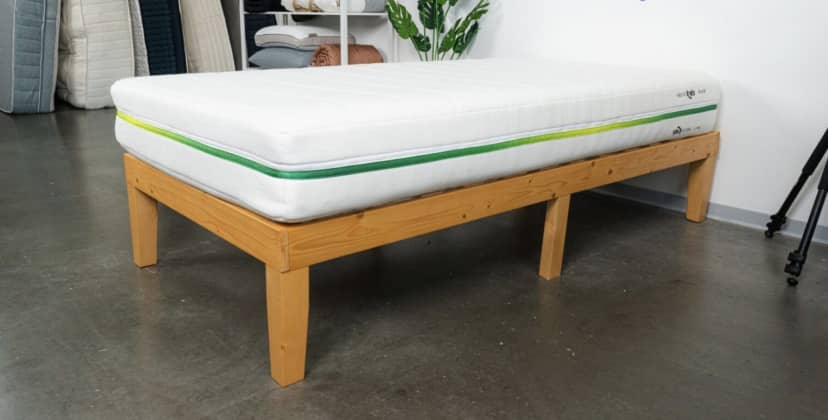
Price
$799
Mattress Type
Hybrid
Firmness Options
Medium Soft (4), Medium Firm (6)
Trial Period
100 nights (30-night requirement)
Full Details
Who It’s Best For: Kids between the ages of 3 and 7 can benefit from using the firmer side, which is designed to align the spine and aid with healthy growth. The softer side offers more cushioning for children between 8 and 12.
Feel: The medium firm (6) side for younger kids offers light cushioning and firm, even support. The other surface is a slightly plusher medium soft (4) featuring foam layers that gently hug the body.
What It’s Made Of: Dense polyfoam makes up the firmer side’s comfort system, while the softer surface is composed of memory foam. A shared support core of pocketed coils is sandwiched between the foam layers, and the cover on both sides is treated with a water-repellent finish.
What We Don’t Like: Kids younger than 3 and older than 13 will need a different mattress, as these age groups fall outside the recommended range. The mattress also costs a bit more than the average child-friendly model.
Scoring & Reviews
The following ratings show how suitable this mattress is for different sleeping positions and sleeper weights. These scores are determined by how well the mattress supports and relieves pressure for each sleeper type.
We performed a meta-analysis on 514 validated customer reviews of the Helix Kids. This is what people who bought the mattress had to say:- Versatility: The mattress is flippable with different firmness levels, making it suitable for children as they grow. This feature is highly valued by parents looking to make a long-term investment in a mattress.
- Material Quality: Users generally report that the mattress is made from high-quality materials, contributing to its durability and comfort.
- Smell and Off-gassing: Some users report a noticeable smell upon unpackaging, which can take a few days to dissipate. This is a common issue with new mattresses but can be a concern for sensitive individuals.
- Size Issues: There are occasional complaints about the mattress not fitting perfectly in standard frames, sometimes being slightly shorter or narrower than expected.
- Customer Service: Helix generally receives positive reviews for customer service, with prompt and helpful responses. However, there are isolated reports of delivery issues or difficulty arranging returns.
Best Mattress for Young Kids
Bear Cub
7.8 /10
Test Lab Score
35% off + free pillows with code: SF35
35% off + free pillows with code: SF35
The Bear Cub is a firm (7) foam hybrid intended for younger kids leaving their toddler bed for the first time. Dense foams and sturdy coils create a supportive sleep surface that promotes even spinal alignment and healthy development.
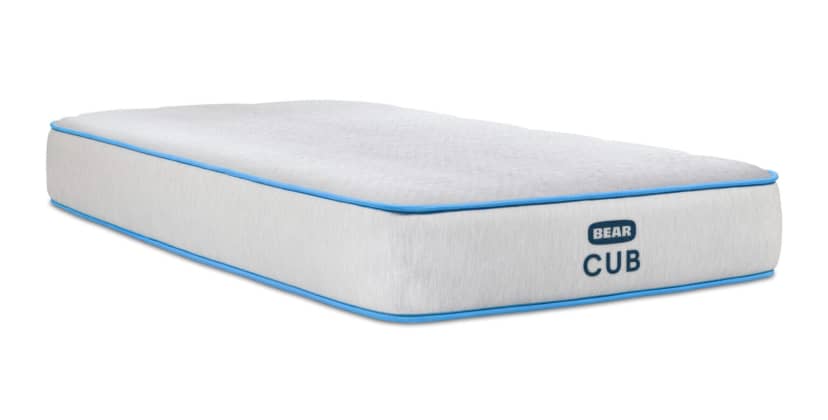
Price
$452
Mattress Type
Hybrid
Firmness Options
Firm (7)
Trial Period
120 nights (30-night break-in period)
Full Details
Who It’s Best For: The Cub’s firm feel is ideal for young children who can benefit from healthy sleep posture. Older kids may enjoy the mattress too, especially if they tend to run hot in bed.
Feel: The Cub contains two foam layers, but the surface is gentle and doesn’t contour very closely. Kids should also notice a smooth bounce when they get in and out of bed — this comes from the coils pushing back against their weight.
What It’s Made Of: The comfort system features an adaptive memory foam layer, and the foam is infused with cooling gel. A polyfoam transitional layer provides enough pushback to keep kids on an even plane, and strong pocketed coils make up the support core.
What We Don’t Like: Strong off-gassing odor can occur when the mattress is new, and some kids may find the mattress too firm.
Most Comfortable Mattress
Nectar Mattress
8.0 /10
Test Lab Score
Up to 40% off mattresses
Up to 40% off mattresses
The Nectar’s plush, pressure-relieving all-foam design has earned the mattress enduring popularity among kids and adults. Approachable pricing and a generous year-long sleep trial further sweeten the deal for budget-conscious parents.
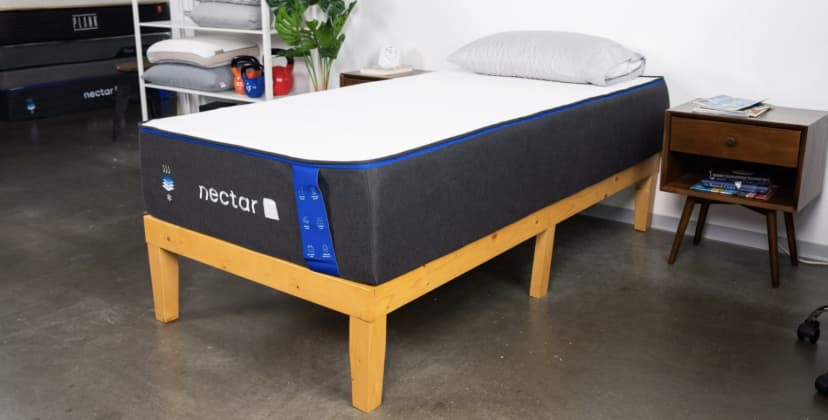
Price
$649
Mattress Type
Foam
Firmness Options
Medium Firm (6)
Trial Period
365 nights
Full Details
Who It’s Best For: Side sleepers enjoy the Nectar for its deep cushioning around the shoulders and hips, two common areas of pressure buildup for those who use this position. Back and stomach sleepers should also sleep comfortably thanks to the bed’s relatively firm feel.
Feel: The Nectar’s surface molds closely, creating a deep cradle for your body’s unique curves and contours. Dense underlying layers create some pushback, but this is a mattress that you’ll sleep “”in,”” as opposed to “”on.””
What It’s Made Of: Three layers make up the Nectar Mattress, beginning with 2 inches of gel-infused memory foam. The transitional and base layers are made of dense polyfoam to stabilize the mattress and prevent you from sinking too deeply.
What We Don’t Like: There are some drawbacks to the Nectar Mattress, including some heat retention from the foam layers, strong initial off-gassing odor, and potential shape loss after a few years of use.
Scoring & Reviews
The following ratings show how suitable this mattress is for different sleeping positions and sleeper weights. These scores are determined by how well the mattress supports and relieves pressure for each sleeper type.
We performed a meta-analysis on 10000 validated customer reviews of the Nectar Mattress. This is what people who bought the mattress had to say:- Pain Relief: Many users have reported significant relief from back, neck, and joint pain. The mattress seems particularly beneficial for those with chronic pain, contributing to better overall sleep quality.
- Free Accessories: Nectar often includes free pillows, mattress protectors, and sheets with the mattress, adding value and convenience for new customers.
- Suitable for All Weights: The mattress supports a wide range of body weights and sizes without losing comfort or stability, making it versatile for different users.
- Temperature Regulation: Several reviews indicate that the mattress does a good job of staying cool throughout the night, which is a significant benefit for those who tend to sleep hot.
- Customer Service: Positive remarks about Nectar’s customer service are common, with many customers feeling supported during the purchasing and setup process.
- Durability Concerns: While many users find the mattress supportive and comfortable, there are occasional mentions of durability concerns, such as sagging or indentations developing over time, particularly from heavier users.
Best Value Mattress
Brooklyn Bedding Kids Mattress
/10
Test Lab Score
25% off sitewide with code: SUMMER25
25% off sitewide with code: SUMMER25
The Brooklyn Bedding Kids Mattress is made from resilient materials and carries an attractive sticker price, giving it great long-term value for parents and guardians. A thin profile makes the mattress suitable for bunk beds as well as standard frames.
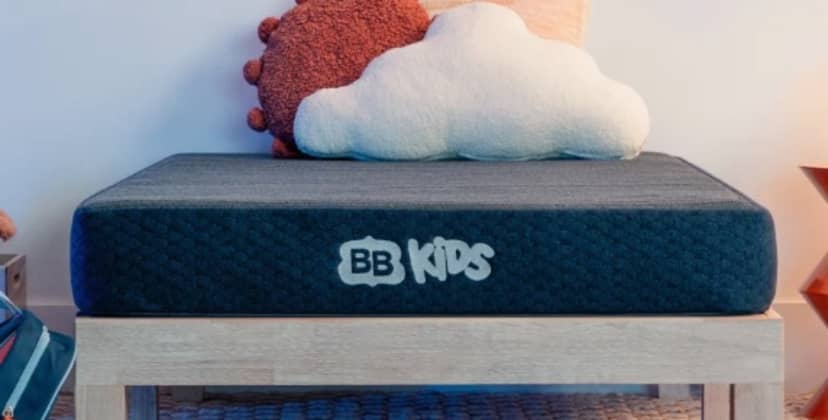
Price
$249
Mattress Type
Foam
Firmness Options
Firm (7)
Trial Period
120 nights (30-night requirement)
Full Details
Who It’s Best For: Younger kids who benefit from a firmer mattress should receive plenty of support from the Brooklyn Bedding Kids. At 6 inches thick, this model is also a safe option for top and bottom bunks.
Feel: The top layer is made of memory foam, but there isn’t much contouring on the surface — a firm (7) feel ensures strong, even support. The dense base layer adds to the robust design.
What It’s Made Of: The Kids Mattress features a straightforward two-layer design with memory foam over dense polyfoam. A stain-resistant cover encases the mattress.
What We Don’t Like: The foam layers retain a fair amount of heat, which can be problematic for kids who run hot in bed.
Best Mattress for Growing Kids
Saatva Youth
8.3 /10
Test Lab Score
15% off orders of $1,000 or more
15% off orders of $1,000 or more
The dual-sided Saatva Youth is a luxurious option for any child. A firmer surface promotes healthy growth and development for kids 3 to 7, while the plusher side should be more comfortable for older kids and preteens. A water-repellent finish protects the mattress from stains, spills, and nighttime accidents.
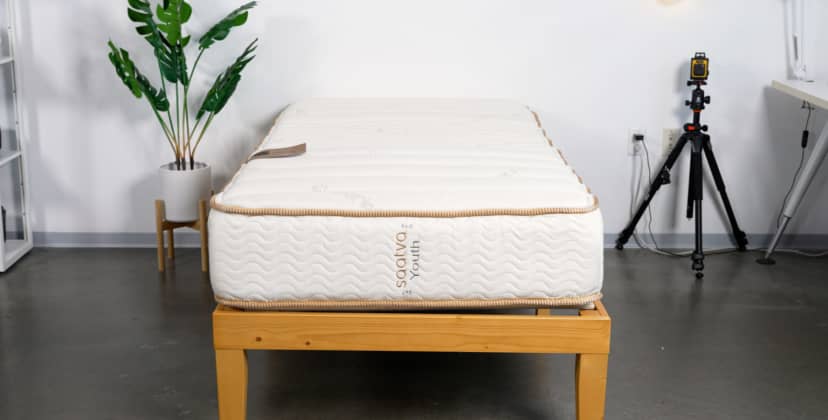
Price
$795
Mattress Type
Innerspring
Firmness Options
Medium (5), Firm (7)
Trial Period
365 Nights ($99 Return Fee)
Full Details
Who It’s Best For: Younger kids should opt for the firmer side, which feels supportive and helps keep the spine aligned. As they grow older, children may prefer the plush cushioning of the softer side.
Feel: The Youth has medium (5) and firm (7) sides, the former offering deeper cushioning than the latter, but both feel supportive and springy thanks to the shared coils.
What It’s Made Of: The firmer surface is padded with convoluted (or egg-crate) polyfoam, while the softer side’s foam layer is divided into five firmness zones. Thick hourglass coils make up the shared support core located between the comfort systems.
What We Don’t Like: The Saatva Youth is expensive compared to the average kids mattress, and returns during the sleep trial incur an additional fee.
Scoring & Reviews
The following ratings show how suitable this mattress is for different sleeping positions and sleeper weights. These scores are determined by how well the mattress supports and relieves pressure for each sleeper type.
We performed a meta-analysis on 26 validated customer reviews of the Saatva Youth. This is what people who bought the mattress had to say:- Improved Sleep for Children: Parents consistently report that their children sleep better on the Saatva Youth mattress, highlighting improved comfort compared to previous mattresses.
- Comfort and Durability: Customers frequently mention the mattress’s comfort and durability, noting that it holds up well even under adult weight during activities like reading bedtime stories.
- Dual Firmness Feature: The mattress offers different firmness levels on each side, which accommodates growing children’s needs as they age, providing long-term usability.
- Positive Delivery Experiences: Many reviewers highlight the efficiency and friendliness of the delivery service, with quick and smooth delivery being a common theme.
- Customer Service: Saatva’s customer service is frequently praised for being responsive and helpful, particularly in resolving issues like incorrect or problematic deliveries.
- Versatility and Support: Parents appreciate that the mattress supports different weights and sizes comfortably, making it a good choice for both children and occasional adult use.
Best Mattress for Spinal Alignment
Nolah Nurture Kids
8.1 /10
Test Lab Score
35% off sitewide + 2 free pillows with mattress purchase
35% off sitewide + 2 free pillows with mattress purchase
The Nolah Nurture has a flippable design a firmer side for younger kids and a softer side for older children — though both surfaces excel at distributing weight and promoting even alignment. Zoned coils provide extra pushback around the midsection for healthy growth and development.
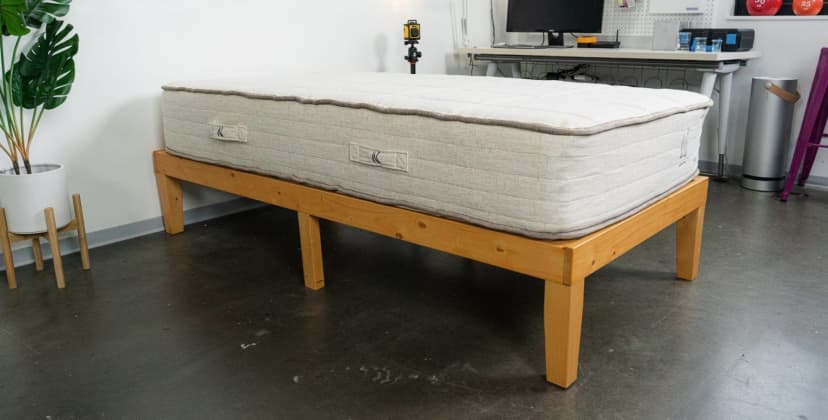
Price
$597
Mattress Type
Hybrid
Firmness Options
Medium Soft (4), Firm (7)
Trial Period
120 nights
Full Details
Who It’s Best For: The Nurture has a flippable design — we rate one side as medium soft (4) and the other as firm (7). Children under 100 pounds may prefer the softer side, while kids weighing more than that may find the firmer side more comfortable
Feel: The firmer side is supportive and springy, while the softer side provides deep cushioning and contouring. Zoned coils deliver strong pushback no matter which surface your child uses.
What It’s Made Of: Both sides of the Nolah Nurture feature polyfoam comfort layers, while the shared support core consists of multi-zone pocketed coils. A breathable organic cotton cover encases the mattress.
What We Don’t Like: This mattress is fairly heavy, so flipping it will probably be a two-person job. Initial off-gassing odor is also fairly strong.
Best Cooling Mattress
Leesa Kids Mattress
7.4 /10
Test Lab Score
Up to 25% off + 2 free pillows with mattress purchase
Up to 25% off + 2 free pillows with mattress purchase
The Leesa Kids sleeps quite cool given its all-foam design, and this is thanks to its gel-infused comfort layers and breathable cover fabric. A low 7-inch profile makes the mattress a good match for bunks in addition to standard kids bed frames.
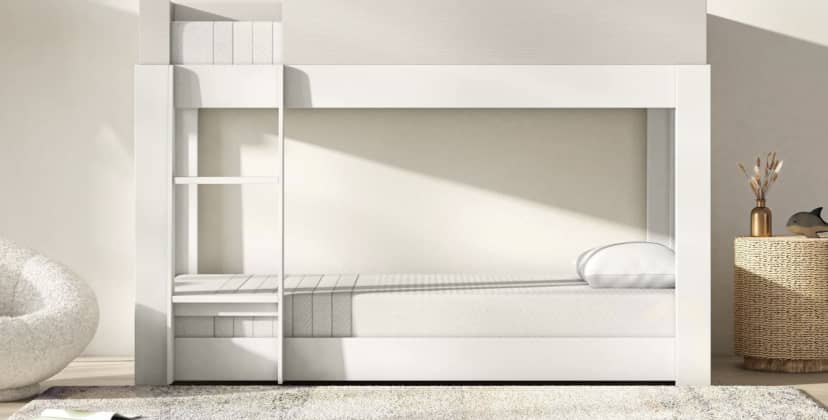
Price
$499
Mattress Type
Foam
Firmness Options
Medium Firm (6)
Trial Period
100 nights (30 night requirement)
Full Details
Who It’s Best For: Children and preteens who sleep hot should get the relief they need from the Leesa Kids, which boasts a breathable design with cooling cover and comfort layer materials. The medium firm (6) feel also ensures a nice balance of cushioning and pushback.
Feel: The top layer is made of memory foam, so there’s some noticeable cushioning on the surface, but denser transitional and base layers provide strong overall stability. A breathable cover also helps the Kids Mattress stay cool.
What It’s Made Of: The Kids Mattress features a three-layer design beginning with open-cell memory foam, which is engineered to promote airflow and resist heat buildup. The transitional and support layers are composed of dense polyfoam for extra reinforcement.
What We Don’t Like: Given its thin profile, you might need to purchase specialty sheets with a lower pocket depth. The mattress might also produce some unpleasant odors for the first few nights after unboxing.
Best Organic Mattress
Avocado Eco Organic Kids Mattress
7.5 /10
Test Lab Score
Save up to $800 at Avocado
Save up to $800 at Avocado
Eco-friendly construction with sustainable materials sets the Avocado Eco Organic Kids Mattress apart from other child-friendly models on the market. Durable latex and sturdy pocketed coils help ensure a long lifespan that can potentially extend to your little one’s teenage years.
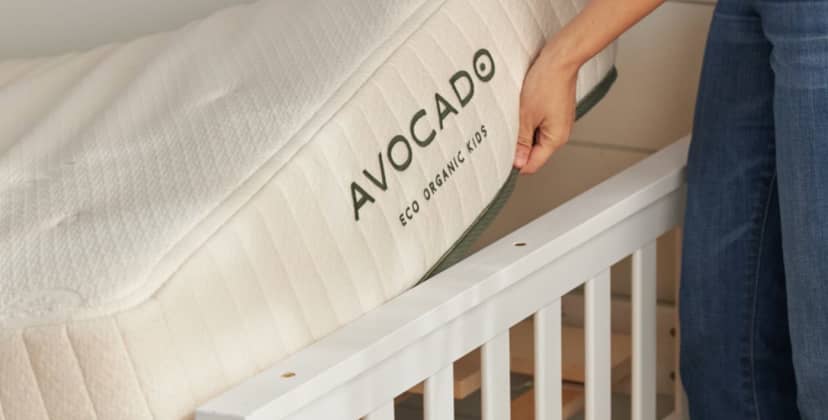
Price
$649
Mattress Type
Hybrid
Firmness Options
Firm (7)
Trial Period
100 nights
Full Details
Who It’s Best For: This mattress can accommodate children across a wide range of weights and heights, and the firm feel is intended to promote healthy growth and development.
Feel: The Eco Organic Kids Mattress has an exceptionally springy feel, which allows your child to move across the surface without sinking too much when they get in and out of bed. The latex is ventilated and the coils promote steady air circulation, so the mattress should also keep cool.
What It’s Made Of: A layer of organic wool beneath the cover serves as the bed’s fire barrier. The latex comfort layer is dense with light cushioning and a noticeable bounce in response to movement. Pocketed coils make up the support core, and the cover is made of organic cotton.
What We Don’t Like: At a 7/10, this mattress might be too firm for kids with sensitive pressure points. You should also look elsewhere if your child has latex allergies.
Best Overall
Helix Kids
8.5 /10
Test Lab Score
Up to 30% off + 2 free pillows
Shop NowA dual-sided kids mattress that promotes proper growth and development.
See More Details
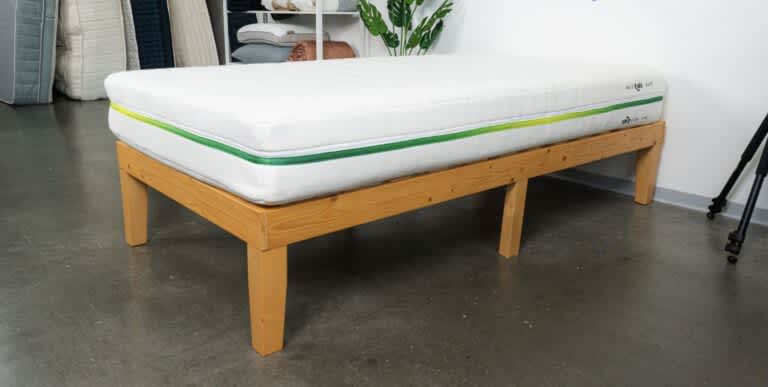
Best for Young Kids
Bear Cub
7.8 /10
Test Lab Score
35% off + free pillows with code: SF35
Shop NowA supportive, high-quality hybrid intended for first-time mattress sleepers.
See More Details
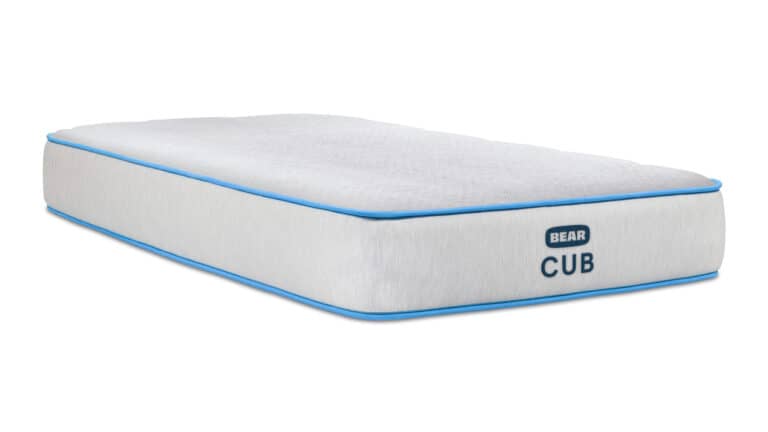
Most Comfortable
Nectar Mattress
8.0 /10
Test Lab Score
Up to 40% off mattresses
Shop NowPlush foam layers deliver deep cushioning and a comfy night’s sleep.
See More Details

Best Value
Brooklyn Bedding Kids Mattress
/10
Test Lab Score
25% off sitewide with code: SUMMER25
Shop NowA supportive, kid-friendly bed with an approachable sticker price.
See More Details

Best for Growing Kids
Saatva Youth
8.3 /10
Test Lab Score
15% off orders of $1,000 or more
Shop NowA reversible hybrid with each side dedicated to a different age group.
See More Details
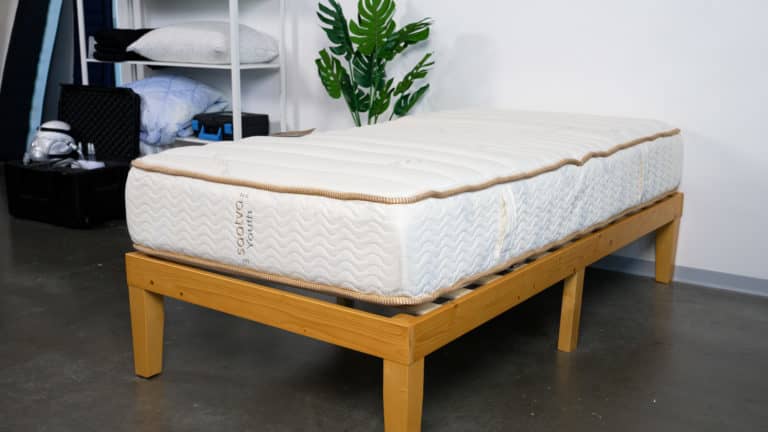
Best for Spinal Alignment
Nolah Nurture Kids
8.1 /10
Test Lab Score
35% off sitewide + 2 free pillows with mattress purchase
Shop NowA reversible, kid-friendly hybrid with a distinct feel on each side.
See More Details

Best Cooling
Leesa Kids Mattress
7.4 /10
Test Lab Score
Up to 25% off + 2 free pillows with mattress purchase
Shop NowAn all-foam mattress designed for soothing, child-friendly sleep.
See More Details

Best Organic
Avocado Eco Organic Kids Mattress
7.5 /10
Test Lab Score
Save up to $800 at Avocado
Shop NowA durable and dependable latex hybrid made to keep kids comfy.
See More Details
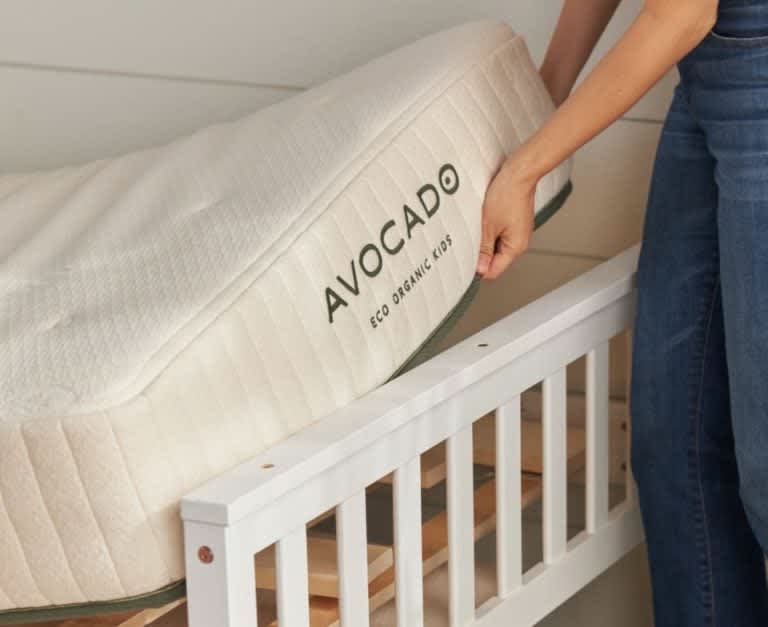
Watch Video: We Tested the Best Kid Mattresses of 2024 – Here Are Our Favorites
Watch the video below for some tips on what to look for when shopping for kid’s mattresses.
Below you will find our in-depth buyer’s guide that covers key factors to consider when selecting a mattress for your child, such as mattress size and firmness. We also discuss the benefits of certain mattress types over other mattress types when shopping for kids. Our guide focuses exclusively on mattresses for children, so keep in mind that infants have different safety needs.
Expert Tested. Sleeper Approved.
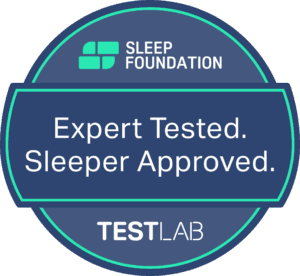

Over the past eight years, our Seattle-based Test Lab has performed hands-on tests on more than 4,000 sleep products — and nearly 2,000 of them are mattresses.
As product experts, we stay up to date on the latest news in sleep science and product trends. We use this knowledge to fuel our data-backed recommendations. Many of our testers have worked directly with mattress manufacturers and visited actual mattress factories. On occasion, a sleep health expert might stop by to tweak a firmness rating.
When we test a mattress, we collect data across six major performance categories and combine these results with real-world feedback. We use tools and tech to monitor features like heat retention, motion isolation, and pressure mapping. In order to ensure our findings are inclusive of all sleepers, our team consists of people with varying body types and sleep positions.
Mattresses aren’t one-size-fits-all. The perfect bed for you is going to depend on general points like your body weight and sleeping position, as well as unique points like if you have back pain, if you sleep hot at night, or if you just like the feel of latex over memory foam. Our goal at the Test Lab is to help take the guesswork out of your mattress-buying process.
So How Did We Pick the Best Mattress for Kids?
To compile our list of the best mattresses for kids, we focused on support, perimeter stability, and other qualities associated with healthy sleep and development for children. Although we evaluate mattresses for kids and adults using the same performance criteria, we paid special attention to feedback from testers weighing less than 130 pounds — the most common weight range for young children and preteens. Other factors that played a role in our selection process included the use of waterproof materials, size availability, bunk bed compatibility, and cost.
Signs Your Child May Be in Need of a New Mattress
Deciding when it’s time to buy your child a new mattress can be a bit of a puzzle. Fortunately, a few telltale signs can help you feel confident when it’s time for an upgrade.
- Your child has aged out of their current bed: Just as kids grow out of shoes and clothes, it’s normal for kids to outgrow their mattress over time. As they get older, kids will need a new mattress when they transition from a crib to a toddler bed, from a toddler bed to a “big kid” bed, and from a childhood bed to one suited for a pre-teen or teen.
- Your child is no longer comfortable: If your child seems uncomfortable or you notice that their feet are beginning to dangle off the foot of the bed, it’s likely that they’ve outgrown their mattress. A mattress designed for a younger child may not offer the support needed for an older child or pre-teen.
- There is noticeable wear and tear: Your kid’s mattress should be upgraded if you can see any visible damage, hear creaky springs, or notice sagging. Remember that an overly worn mattress can impair the quality of your child’s sleep.
What Do Kids Need From Their Mattress?
Kids need a mattress that caters to their unique needs, preferences, and evolving growth patterns. The right mattress provides foundational support for their posture and physical development, ensuring they wake up refreshed and ready for new adventures each day.
Room to Grow
Perhaps the most important consideration when choosing your kids’ mattress is size. Just like their favorite pair of shoes, your child’s mattress needs room to accommodate their growth. Toddlers may fit snugly in a twin-size, but preteens often benefit from larger full or queen sizes. Anticipate growth spurts and whether they will share the bed with siblings. Also, consider mattress height, especially for bunk beds and uniquely sized bed frames.
| Size | Dimensions |
|---|---|
| Twin | 38″ x 75″ |
| Twin XL | 38″ x 80″ |
| Full | 54″ x 75″ |
| Full XL | 54″ x 80″ |
| Queen | 60″ x 80″ |
Support for Changing Bodies
Support in a mattress means it can adequately bear your child’s weight, adapt to the contours of their body, and maintain spinal alignment. As kids grow, and their weight and body changes, they will need different levels of support. Larger children may prefer a firmer bed that supports their body weight, while smaller children may like a softer bed that they can sink into.
Additionally, your child’s preferred sleeping position plays a role in choosing the right mattress. Side sleepers tend to feel more comfortable on softer mattresses that cushion their hips and shoulders, while those who sleep on their backs or stomachs might favor firmer options to ensure their midsections don’t sink too much.
Comfort for Evolving Tastes
Comfort is different for everyone and differs from support. While younger kids often prefer a softer mattress, adolescents tend to lean towards a firmer feel. Since comfort isn’t a one-size-fits-all concept, it can help to talk to your kids about what kind of bed they’d like. Recognizing your child’s thoughts and preferences can help to ensure that they feel comfortable in their new bed.
“When buying mattresses for my kids, my biggest goal is helping them sleep through the night. Beds with cooling properties are great, to avoid overheating. Plush and cozy models were a good fit in their younger years, but I’ve opted for firmer beds as they’ve gotten older — to make sure their growing bodies are fully supported.” – Mina Hochberg, Senior Product Manager
What to Look for When Shopping For a Mattress for Kids
When shopping for your child’s next mattress, it’s essential to consider the qualities in a bed that matter most to a kid.
Mattress Type
Just like mattresses for adults, kids mattresses come in a wide variety of styles. The most common types of kids mattress include foam, hybrid, and latex models. Each mattress type offers unique benefits tailored to children’s needs.
Foam Mattresses: These mattresses are often chosen for their cozy feel, contouring, and pressure relief. They usually have a lower price tag than other types, but may lack durability and can sometimes retain heat.
Hybrid Mattresses: Combining foam with coils, hybrids offer both comfort and support, making them versatile for growing kids. They usually provide better temperature regulation but can be pricier.
Latex Mattresses: Durable and responsive, latex beds offer excellent support and are available in eco-friendly models. They can be more expensive, which might not be ideal for very young children who will quickly outgrow their mattress.
Allergies, Sensitivities, and Off-Gassing
When shopping for a child’s mattress, it’s important to consider any allergies and sensitivities your child has. Some materials, like latex and certain types of synthetic foams, can irritate allergies or sensitive skin. It can be helpful to research and opt for hypoallergenic materials.
Off-gassing refers to the release of volatile organic compounds (VOCs) from new mattresses, which can cause a temporary odor and sometimes affect those with sensitivities. Prioritizing natural or certified materials can minimize off-gassing and provide a safer sleep environment.
Look for Mattress Certifications
Finding a mattress with certain certifications can help to ensure that a mattress has been tested for safety.
- CertiPUR-US: This certification ensures the foam used in mattresses is free from harmful chemicals and has low VOC emissions.
- GREENGUARD: Recognized for products that maintain low chemical emissions, this standard ensures that a mattress protects indoor air quality.
- Global Organic Textile Standard (GOTS): GOTS certification indicates that the textiles used in the mattress are organic and have met specific environmental and social standards.
- Global Organic Latex Standard (GOLS): This certification confirms that the latex in a mattress is organic and produced sustainably, considering both environmental and worker safety.
Price and Durability
Children’s mattresses come in a wide price range, with factors such as materials, size, and brand influencing the cost. When choosing a mattress, it can help to consider its durability and lifespan because a long-lasting mattress offers greater value over time.
Because kids grow up quickly, consider a mattress that can accommodate several growth spurts. Investing in a durable and slightly larger mattress means not having to replace it as frequently. For instance, while a bed for a 3-year-old might soon be outgrown, a well-chosen mattress for a 10-year-old could potentially see them through to their late teens and into adulthood.
Tips for Protecting Your Child’s Mattress
Don’t forget that you can also increase the lifespan of a mattress through proper care. Regular cleaning, using mattress protectors, and occasionally rotating or flipping the mattress can prolong its lifespan, ensuring you get the most out of a new mattress.
Temperature Control
Whether from active dreams, summer heat, or the occasional fever, children often benefit from sleeping on a mattress that doesn’t retain too much heat. Look for features like gel-infused foams, open-cell designs, or moisture-wicking covers to tell that a mattress is designed to stay cool.
Trials, Returns, and Warranties
Trial periods, also called sleep trials, allow you to use a bed before deciding whether to keep it. Choosing a mattress with a generous trial period gives you and your child the chance to make sure a new bed is the right fit. Flexible return policies and warranties can also provide parents with peace of mind, knowing that a bed can be sent back for things like manufacturing defects and excessive wear.
Dive Deeper – In-Depth Mattress Guides
For more help deciding which mattress is right for your specific needs, check out the guides below.
Best Mattress by Sleeper Type
Frequently Asked Questions
While there’s no one-size-fits all mattress type for children, we’ve found that hybrids adapt to children’s changing needs over time, striking a comfortable balance between supportive coils and conforming foams. That said, a high-quality foam or latex mattress can be great options for families seeking an inexpensive bed or one that is eco-friendly.
The ideal firmness level for a child depends on their body weight, sleep position, and personal preference. Young children and those who sleep on their side can opt for a softer mattress, while older children and those who sleep on their stomach or back may like something a little firmer.
A kid’s bed should be thick enough to be comfortable and allow them to get in and out of bed easily. While adults often look for thick mattresses with several layers of material, children’s lower body weights mean that many beds designed for kids are on the thinner side.
Most importantly, beds should conform to any thickness requirements of the bed’s frame or foundation. Bunk beds often have thickness and weight requirements to ensure a child’s safety.
The best mattress for children with allergies depends on the type of allergies they have. Common choices include hypoallergenic mattresses and those that have been certified as organic.
A child’s mattress typically lasts between 6 to 8 years, depending on its durability and quality. However, children’s growth spurts might necessitate a larger bed before the mattress wears out. Because of this, it’s helpful to find a balance between investing in a durable mattress and anticipating the need for size upgrades as your child grows. Also keep durability in mind if you plan to reuse the mattress for your child’s younger siblings.

Still have questions?
Our product experts have extensive experience testing just about every sleep product on the market.
Send an email to [email protected] with your questions and we’ll help you find exactly what you’re looking for.

